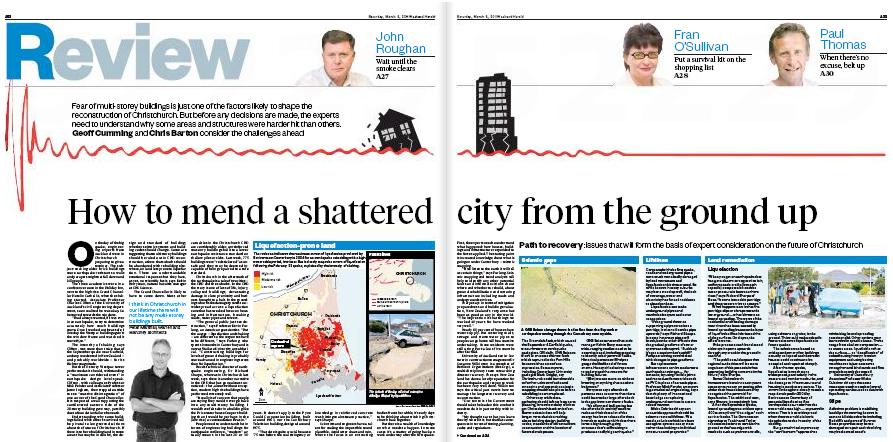New Zealand Herald feature writers Geoff Cumming and Chris Barton look at the challenges that lay ahead in rebuilding Christchurch, interviewing scientists and engineers tasked with ascertaining what happened to Christchurch’s buildings.
 An excerpt: (read in full here)
An excerpt: (read in full here)
“Old-fashioned timber-framed houses on concrete-block perimeter foundations appeared to withstand the first quake better than some recent homes’ concrete slab foundations. Misko Cubrinovski says even brand-new homes built on unreinforced slabs have been damaged. American geoscientist Kevin Furlong says timber frame homes on piles and concrete perimeter foundations may have distorted but didn’t break. This raises questions about why solid wall homes on unreinforced slabs were allowed in areas known to be liquefaction-prone. It’s early days, but more robust pile foundations may be required on new houses in liquefaction zones. Floating ‘waffle’ slabs are another option.”
Chirs Barton writes a comment piece in the New Zealand Herald on how Christchurch’s communications infrastructure stood up during and in the wake of the disaster.
Communications after the quake: Good, but could do better
An excerpt: (read in full here) “…while Christchurch’s mobile networks largely stayed up during the crisis, there were problems. Texting between carriers failed for a time, apparently because of congestion. It’s a situation that warrants further investigation. The cost imbalance for texting between carriers is bad enough, but inter-operability failures at a time of crisis are totally unacceptable. If the Government is still looking for a reason to regulate mobile inter-network texting connectivity, then this is it.”